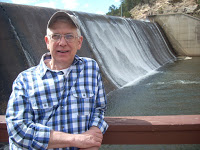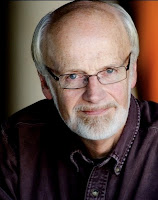In the churches where I worshipped and worked, rants about homosexuality did not come from the pulpit but, rather, from the pew. In fact, the only homosexual statement I heard from the pulpit was a quote from an early 1950s semi-autobiographical novel, Go Tell It on the Mountain, by James Baldwin. The preacher made no allusion to Baldwin’s sexuality or any condemnation of the writer. He made no apology for using a quote from a literary best seller. What the preacher knew of Baldwin, I don’t know.
But there was a history in America, a tradition in Euro-American societies that made homosexuality more than a bad thing. Years of silence over the matter continued in the 20th century by sending homosexuals to counseling or to sanitariums. Folk who lived homosexual lives ran away to cities getting lost in urban concentration. Surely their condition was something foreign, out of the ordinary, and ‘here in our little Eden, will not be tolerated.’ Any change of public or even family perception of one’s sexuality caused folk to move away. Silence reigned.
Then the US saw the beginnings of the Civil Rights movements. With it came sensitivity training. The women’s movements, Black power movements, Gay Pride movements, and other liberation movements began to influence law making and law enforcement. They changed even the way the military went about its training and work.
Fears of these new powers fed the growth of conservative reactionary movements. Evangelical churches ended their lethargy and began focusing on influencing public life. They increasingly removed themselves from moderate and liberal denominations. For instance, many evangelicals left the United Presbyterian Church when that denomination’s Social Action committee helped fund Black woman radical Angela Davis’s defense in court. Then the same reactionaries rose up against what they saw as an attack on the modern American family. They wrote books on the way things were supposed to be. They were disturbed by their own children’s refusal to follow traditional ways. Their middle-class kids preferred to live with their spousal picks without the advantages of marriage. Someone had to pay. Very hurt, nice folk turned the accusing finger against gay males condemning them for trying to destroy the family with their gay agenda. Their vitriolic attack resulted in a split in public life.
While in college in the late 1960s I focused on reading about homosexual experience. Then I made my first adult friendship with another musician who was gay. Throughout the 70s I continued reading a rapidly expanding literature and minutely examined the nature of my own sexuality in which I was not really surprised to find a homosexual core. My self-consideration meant to create and maintain a balancing act of faith, morality, and ethics.
In 1968 the church denomination in which I worked voted to proclaim publically that gays and lesbians deserved the same civil rights as all other American citizens. I went to seminary a few years later. There I met more gays, fell in love with a man, read more about what churches were saying and doing, and costumed myself as a gay man when attending a minorities group at the seminary. I did so as a show of solidarity. Surely my actions were also a self-revelation of my own bisexuality.
As church clergy I started teaching my balancing act of faith, morality and ethics. My wife, children, and I were open and affirming of gays and lesbians. We welcomed gays and lesbians into our home. We travelled with two homosexuals to celebrate our 25th wedding anniversary. My studies embraced the issues. In one local congregation I led a seminar about human sexuality positing a bi-sexual norm for its consideration.
Finally I understood that I was going to live a homosexual life. My affairs with men pushed me into a much deeper understanding of myself. I was tired of church work. I didn’t know how to solve my domestic dilemma. I dropped out of church leadership and eventually of congregational life.
In my thirty-two years of ministry, I had observed a marked change in congregational attitudes toward homosexuality, particularly toward homosexual ministers. In fairness, I believe that lay attitudes didn’t so much change as they got expressed. In our denomination the discussion at times became vitriolic being attached to a larger fight for dominance between conservative and liberal factions.
I heard heated words: accusations of not being biblical, arguments arising from holiness code excerpts from Leviticus, assumptions that anyone involved in any homosexual activity must repent or go to hell, and so forth. Eventually I received messages from family members registering both their rejection of me while living in such a sinful life and prayers for my reconciliation and redemption. I had to receive them as truly hopeful but reject them as a path I might follow.
Early on in my ministry I realized I might get in trouble over homosexual issues in the church when I suggested to a man I really liked that he shouldn’t use anti-homosexual humor. I did so because he was using it among the men in the cast of a play we were producing for a Maundy Thursday service. The young man playing the Jesus role was homosexual. The man I criticized was playing Judas. There was the obligatory kiss. Perhaps my Judas was simply playing out his part or perhaps he was also secretly homosexual. I have no idea and say none of this as accusation. Both men were beautiful to me. I didn’t want the church member to be making the guest Jesus uncomfortable. I also realized that my non-public warning to the jokester might be just the kind of thing that I would pay for. Still, for the greater good of the play and of the persons involved, I suggested such humor was out of place.
I saw this kind of thing several times in my career. I tried to keep an even keel for the old ark of the church, one that didn’t alienate the more conservative but also made a place for the more liberal or, as some conservatives thought, the more sinful or worldly. I preached that the world and the world of the church was very large encompassing unimaginable diversity. I encouraged loving forbearance and acceptance of that diversity. I quietly preached such a doctrine for thirty-two years. Finally I had preached enough.
I have read and heard the anti-gay rhetoric. I have analyzed the pick-and-choose approach of scriptural proofs. I came to realize I had made different picks and choices of proofs to maintain a consistent logic in a commitment to the image of the creative and ultimately loving God. I declare myself a Christian, and although I’ve retired from the clergy and haven’t preached in a church for over fourteen years, I have one last sermon to preach. Listen.
Some folk seem to think that one cannot be Christian and gay. Well, I’m announcing from my pulpit that I am one such person, a gay Christian. There are thousands, tens of thousands others like me, who do not accept the rejecting authority of would-be representatives of the Truth. These accusers assume the role of the god in their communications of condemnation. Tens of thousands like me also reject the more subtle settlement of many churches that one can be homosexual but cannot live in that way. These judges condemn having sex with a person of the same sex even in a committed marriage, itself anathema in their view.
My pulpit announces the beauty and norm of gay marriage or any other loving, living arrangements. My pulpit announces the end of the holiness code like any self-respecting dispensationalist preacher should. My pulpit announces a new beginning of the ancient standards of love, felicity, and creativity in all human relationships. Oh well, lest this sermon go on too long, I’ll follow the advice of one preacher’s wife who told her husband when he was done, he should simply say “Amen” and sit down.
Amen.
© 2015
About the Author
Phillip Hoyle lives in Denver and spends his time writing, painting, and socializing. In general he keeps busy with groups of writers and artists. Following thirty-two years in church work and fifteen in a therapeutic massage practice, he now focuses on creating beauty. He volunteers at The Center leading the SAGE program “Telling Your Story.”
He also blogs at artandmorebyphilhoyle.blogspot




